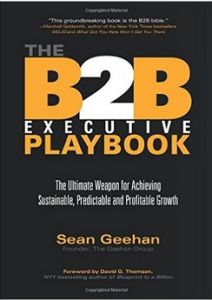Join getAbstract to access the summary!

Join getAbstract to access the summary!
Sean Geehan
The B2B Executive Playbook
The Ultimate Weapon for Achieving Sustainable, Predictable and Profitable Growth
Clerisy Press, 2011
What's inside?
Business-to-consumer tactics don’t work for business-to-business firms. They need their own playbook.
Recommendation
Many business-to-business (B2B) firms pattern their marketing efforts after those of successful business-to-consumer (B2C) firms. But B2B firms aren’t like Apple, Starbucks or Procter & Gamble. B2B companies need their own playbook, so consultant Sean Geehan wrote this one. The recipient of Ernst & Young’s 2002 Entrepreneur of the Year award, Geehan brings 25 years of experience advising B2B firms to this effort, which includes instructive case histories of successful B2B firms. His touchstones include Intesource, the procurement services company with nearly $50 million in annual revenues, and the $40-billion computing giant Oracle. getAbstract recommends his effective, real-world toolbox to business students, and to B2B entrepreneurs and executives.
Summary
About the Author
Sean Geehan is founder and CEO of Geehan Group, a consultancy for B2B firms. He won the Ernst & Young’s 2002 Entrepreneur of the Year award.
















Comment on this summary